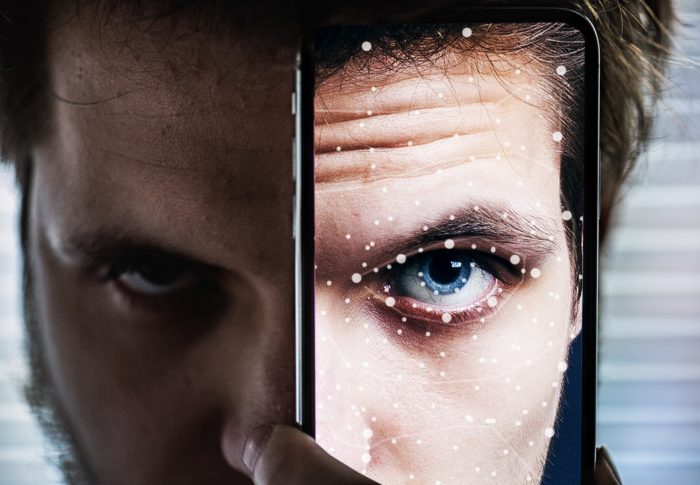Good Monday morning. It’s November 25th. I am thankful for you, the people who read this, and thrilled to be a part of your Monday mornings. Please always write or comment when the mood strikes.
Today’s Spotlight takes about 5 minutes to read. Want to chat about something you see here? Here is a contact form.
1. News To Know Now
1. Sir Tim Berners-Lee published an op-ed touting his Contract for the Web project. As Sir Tim says when he needs attention, he invented the web, and this is his proposal to fix it. The Contract is endorsed by 80 signatories and has a key group of 10 stakeholders (think the UN Security Council) including France, Germany, Microsoft, Wikimedia, and Google. Read the NYT op-ed or see the Contract.
2. Loon provides internet connectivity by flying balloons in the stratosphere over an area. Loon signed a deal last week to provide connectivity to remote areas of the Amazon in Peru. The company is owned by Google parent Alphabet and previously provided connectivity to earthquake-ravaged areas in Peru. Read the Mashable story or see the website.
3. Google followed Twitter (yes, I know) into the bumpy world of political advertising. Here’s a quick guide:
- No politicians may advertise: Twitter, TikTok, LinkedIn, Pinterest, Twitch
- Some restrictions: Google (targeting), Snapchat (fact checked), Reddit (federal only)
- No restrictions as of today: Facebook
2. Facial Recognition Technology Has An Ugly Side
Experts worry that privacy degrades as pervasive technology monitors our ongoing vital signs, measures how fast we are traveling, tracks our location, and uses biometric measures such as fingerprints and face scans to unlock our devices.
Privacy concerns notwithstanding, facial recognition technology has significant societal problems including tensions with data aggregators and algorithmic biases that favor wealthier, whiter populations. Even the technology used in consumer products has notoriously lower reliability in recognizing people with dark skin.
Technologists asked to fix such a problem sometimes do dumb things as ZDNet found this summer when Google stopped people in malls like a survey taker and offered $5 Starbucks or Amazon gift cards in order to have a person spend five minutes with a phone analyzing their face.
Yes, there was a waiver. No, it’s doubtful many (any?) read it.
Google is not the sole source of problems. Great reporting by the NY Times found that 700,000 images consumers uploaded to Flickr were part of the MegaFace database of millions. The database began at the University of Washington as a test to see how facial recognition algorithms were progressing. More than three hundred research groups downloaded the project. Most were legit. But others were used to monitor sensitive populations in China or identify subway passengers in Russia.
You’re thinking about your old Flickr account now, aren’t you?
The ACLU is suing the FBI, Justice Department, and DEA to learn how the federal government is using facial recognition technology. You can drop in on a podcast with Arielle Duhaime-Ross at Recode that digs deeper into the issue.
Why would we write about this again after an overview earlier this year? We’ve told you a lot in the past about Amazon’s Ring video cameras on millions of front doors. The AP reported this week that Amazon is considering installing facial recognition software on Ring which means that any person, even those passing by on a public street, can be identified and their images stored in a database. And in the ‘hold my beer’ department, Facebook acknowledged that it had tested internal facial recognition technology for employees in 2016. Employees were allowed to use it on Facebook to identify themselves and the Facebook friends of employees.
3. Google Search Updates
- Google may alert Chrome browser users about slow loading websites in an update due after the new year.
- You’ve undoubtedly seen many websites trying to get more Google traffic by posting mini videos demonstrating a word’s pronunciation. In its endless quest to keep search traffic on its own website, Google will now demonstrate pronunciations directly in the search results. They’ll even slow down the audio if you’re having trouble and toggle between American and British pronunciations.
Search this way: how do you pronounce [word]? Some seasonal words to try: charcuterie, cornucopia, yams. - You’ll also see some titles in your search results that appear truncated or missing words with the name of the business area replacing them. Search Engine Land found that was part of a Google plan to surface more relevant local information in search results. For now there is no way to opt in or opt out. Here’s an example:

4. Debugged: Facebook does not write off donations
You’ve seen Facebook fundraisers for groups fighting for everything from world hunger to climate change. And if you or any of your friends have entered your birthday information on Facebook, you’ve seen many fundraisers.
A viral meme wrongly suggests that Facebook claims the deductions themselves, uses the amount to offset their taxes, and keeps up to 85% of the donated funds.
All of that is wrong. Facebook doesn’t even charge credit card processing fees for birthday fundraisers.
5. Also in the Spotlight: Cosmic Crisp Apples
Americans consume more than 17 pounds of apples each year. While you weren’t looking the Red Delicious and Granny Smith varieties saw their market share plummet. Combined the two varieties now make up less than 20% of apples consumed by Americans.
About a quarter of the apples we consume now are Honeycrisp, but retailers complain that they’re hard to ship and keep unblemished. Coming this week (probably, but post-Thanksgiving) is the Cosmic Crisp apple created at Washington State University.
The new apple variety is getting buzz that most fruits don’t get thanks to a $10 million advertising campaign. Honeycrisp made its patent holder, the University of Minnesota, millions since its introduction in 1991. Cosmic Crisp with full retail prices in its future and a big ad campaign at launch time should be worth more.
You’ll sound so smart when the commercials start. Read more at Eater.
6. Great Data: Physicians and Pharma Money
There are plenty of good reasons and training opportunities for physicians to accept pharma money. There are also abuses as detailed by ProPublica’s update of its landmark “Dollars for Doctors” database. More than 2,500 physicians have received at least half a million dollars apiece from drugmakers and medical device companies in the last five years alone. Those payments do not include research or royalties.
Get the data here. And talk with your doctor if you have concerns.
7. Protip: How to record Calls on your smartphone
Do you have the nice tradition in your world where people gather for a holiday and call others who couldn’t be there? Why not record the call and send it to others who couldn’t be on the phone? First responders and service members come to mind. I’m sure that you have other examples.
Make sure you tell everyone that you’re recording.
8. Bizarre Bazaar (strange stuff for sale online)
Do you like mushroom stuffing? Well, this idea is too late for Thanksgiving, but you can enjoy fresh mushrooms for future holidays with your very own “Mushroom Growing Kit”, and who knew that was a thing?
The mushrooms are advertised as edible.
9. ICYMI — Top links from the past 30 days
Gross Domestic Product — Banksy’s online shop
Free Google Digital Wellbeing Apps — proud of y’all for downloading
Blood Pressure Selfie Software Doesn’t Work on Dark Skin — at Quartz
10. Coffee Break: 10,000 Stars
Stunning visuals. Please do yourself a favor and take the short guided tour shown on the home screen.
My favorite time-waster last week.
Hey, we know you love us too since you’re down here at the bottom of the newsletter about facial recognition technology. Would you do us a favor and forward this to someone who you think will enjoy Spotlight like you do? Tell them they can sign up for free by clicking the silver button below.
As for you, here are three ways that I can help you:
1. Get a free SEO audit on our website.
2 Have a simple, fact-based question about digital marketing? Reply & ask for free.
3. If your organization needs help with search, social media, or advertising, have a look at what we do.





